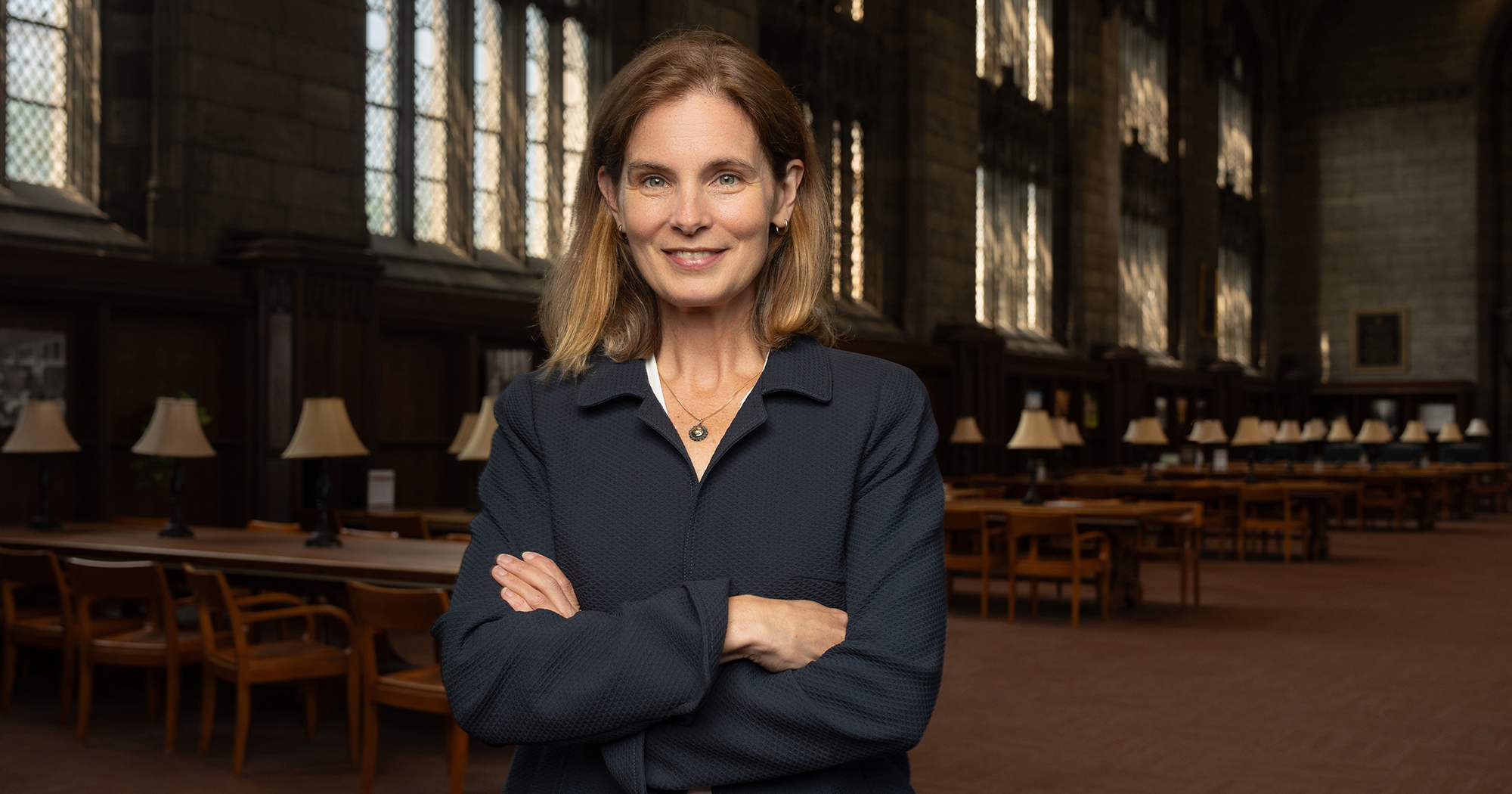
The College’s new dean, Melina Hale, PhD’98, brings leadership experience and unlimited intellectual curiosity to a crucial role.
Melina Hale wanted to study primates. The daughter of teachers turned travel agents, she had watched giant tortoises in the Galapagos Islands and gorillas in Rwanda. Throughout high school she had immersed herself in a volunteer position at the Museum of Science in Boston as a “junior curator” of live animals, including rescued or confiscated alligators, owls, kinkajous, and more that were part of the museum’s educational programs.
Dreaming of a career studying animal behavior, Hale, PhD’98, applied early to Duke University, with its famed lemur center. By the following fall, she was spending much of her time there, observing the animals, taking notes, looking for patterns.
In spring semester Hale enrolled in a small seminar taught by biologist Steven Vogel. He had recently published Life’s Devices: The Physical World of Animals and Plants (Princeton University Press, 1989), a lively meditation on the ways physical laws influence the mechanical design of plants and animals. “The questions of concern here are enormously diverse,” Vogel writes in the preface, “ranging from why trees so rarely fall over and the significance of the hull shape of baby sea turtles to the relative scarcity among organisms of right angles, metals, and wheels.” It goes on in this casually curious manner.
The seminar, which worked its way through Life’s Devices, met early mornings. Vogel brought muffins from home that he had baked. Hale quickly became entranced with the subject matter—and quickly had insights. An observation she, a first-year student, made in class about the possible function of lengthwise grooves on birds’ wing feathers turned up a decade later in Vogel’s book Cats’ Paws and Catapults: Mechanical Worlds of Nature and People (W. W. Norton, 1998).
To her interest in animal behavior, Hale was adding biomechanics—the study of how the myriad life-forms around us walk, fly, swim, stand, and perform countless other interactions with their environments. She joined the lab of Stephen Wainwright, whose work, together with Vogel’s, was foundational in the development of modern biomechanics.
The two interests proved mutually illuminating as Hale embarked on her earliest fieldwork. She spent fall semester of her junior year in Madagascar’s Ranomafana National Park, observing lemurs in their social groups as part of primatologist Patricia Wright’s team of field assistants. The next summer she traveled to Washington’s San Juan Islands for courses at Friday Harbor Laboratories, including one on taphonomy: the process by which living things, after death, become part of the fossil record.
Hale was one of only two undergraduate applicants to the course, but attached to her application was a letter of support from Vogel. “I was hesitant to admit her,” says Michael LaBarbera, professor emeritus of organismal biology at the University of Chicago, who co-taught the course and later became Hale’s doctoral adviser. “I worried about her inexperience. It turns out I had no reason to worry.” To this day he vividly remembers her class project on the fossilization of shark skeletons for its originality and elegance.
Captivated by the widening horizon of biomechanics, Hale returned to Duke for her senior year and got going on her graduate school applications. With all she’d learned had come more interests and better questions—a cycle that was only beginning.
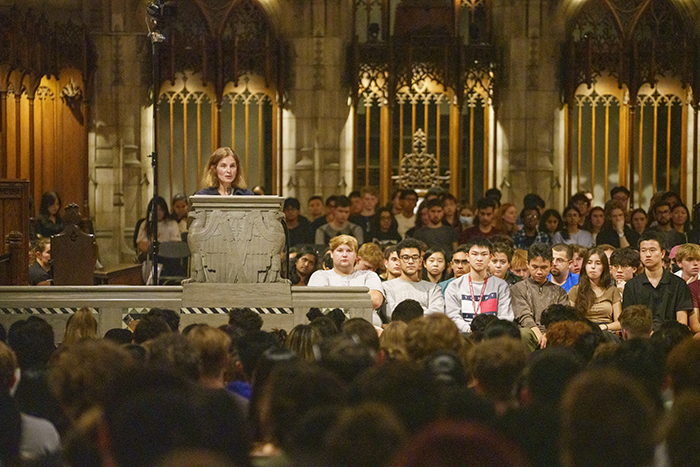
At the University of Chicago the next year, Hale joined LaBarbera’s lab. From there her world within the University steadily expanded: student, alumna, junior faculty member, tenured professor—to name some of her roles since arriving. Then, last June, she was named dean of the College.
Hale is no newcomer to academic leadership. Prior to becoming dean, she served for seven years as the University’s vice provost for academic initiatives. She has held a seat on the Council of the University Senate, including as its spokesperson—the highest elected faculty position at the University—and was dean for faculty affairs in the Biological Sciences Division. She has been co–interim director, with Neil Shubin, of the Marine Biological Laboratory (MBL); president of the Society for Integrative and Comparative Biology; and a board member at the Laboratory Schools, attended by her three sons. (Hale is married to Mark Westneat, a professor of organismal biology and anatomy at UChicago whom she met in college.)
Hale’s appointment as dean of the College puts her at the helm of an institution that carries special significance, not only within the University, but in US higher education writ large, where it has been recognized as distinctive at least since the Hutchins years. Her appointment is also the beginning of an era as she steps in after John W. Boyer, AM’69, PhD’75, who served in the role for 31 years and has, in no small way, come to represent the College over that time. Being appointed to succeed Boyer is a recognition of Hale’s commitment to the school’s legacy and future. It is also an emphatic endorsement of her capability.
Since assuming the role, in which she is broadly responsible for shaping the strategic vision for the College while supporting its fundamental values, Hale has been clear about her dedication to the College’s most distinctive features, in particular the Core curriculum and freedom of expression. The two go hand in hand, twin pillars at the center of a College education, while the world around UChicago is changing. In both its fidelity to disciplinary breadth and its defense of scholarly freedom, the College might appear increasingly alone in the higher education landscape. That, in Hale’s view, is all the more reason to “firmly double down” on these fundamental values.
During opening convocation, she underlined some of the well-established virtues of the Core: it teaches you how to think, not what to think; it offers new ways to approach questions. But then she suggested a more “devious logic” to its presence. “We want you,” she said, “to be less certain about what kind of mind you think you have and what you should do with it.” The Core is intended to push students beyond the world they know; it is an attack on intellectual rigidity and complacence. Last summer Hale had followed her own advice, borrowing a copy of St. Augustine’s Confessions from her son—he is a student in the College and had read it in his Hum Core sequence—and working her way through it for the first time.
Without a firm commitment to free expression, the College could not realize the Core’s most important aims—to challenge, to unsettle. “A good university, like Socrates, will be upsetting,” notes UChicago’s Kalven Report, published in 1967, about the University’s role in political and social action. It is through friction and disagreement, Hale says, that members of a university community hone their ideas, strengthen them, or perhaps abandon them altogether—and the ability to speak openly lies at the heart of this project. “A distinctive gift of liberal arts education,” she called it in a welcome message to the Class of 2027 last fall—and “something we can only develop in community, with mutual respect and tolerance.”
Her work as dean, however, is focused not only on upholding such long-standing principles but also on how the College needs to develop, what new philosophies or practices it ought to embrace. She is captain of a large ship, charting a course.

Hale’s early thinking about that course revolves around how students learn and grow both in and out of the classroom. The production of new intellectual work—scholarly analysis, research, or art—is for her a necessary aspect of academic life, whatever a student’s disciplinary interests. This thinking has ties to her own experiences, all the way back to her college days in the lemur center and on the San Juan Islands, and all the way forward to her UChicago research projects, which routinely include undergraduates as part of the team. She is set on expanding the number and types of opportunities students have to engage in original research and other intellectual work—in the sciences and humanities alike—and is thinking through how they might be formalized and become a basic expectation of undergraduate education at UChicago.
Another keystone of Hale’s vision is ensuring that all admitted students can afford the College, whatever their families’ financial means. The Odyssey Scholarship Program, launched in 2007, established a baseline for financial aid by replacing loans with grants for College students from lower-income families or who are the first in their families to attend college. Odyssey and the support it offers have expanded steadily since then, thanks to the commitment of alumni, parents, and friends. Still, the existing resources don’t cover all of the existing need—and everything else on Hale’s agenda crucially relies on the richness of experiences and perspectives that broad access to the College brings.
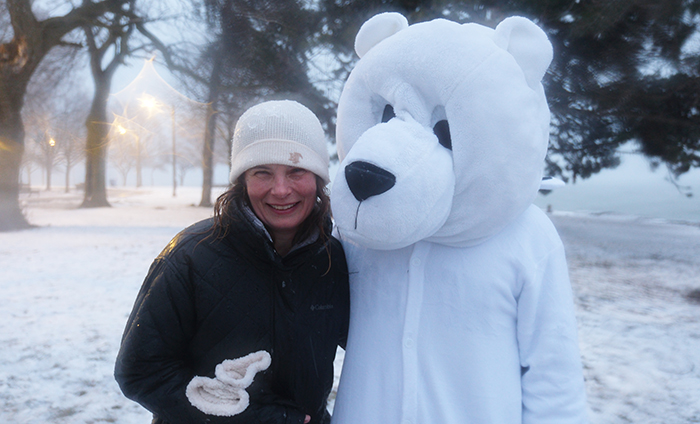
Ambitions like these will not be realized overnight, but Hale, across her long career, has proven adept at the fragile process of leading organizations through change. “She’s the dream administrator, and I think most administrators are nightmares,” says Joe Fetcho, a professor at Cornell who served as Hale’s postdoctoral adviser.
He and others describe her as a careful listener who considers all sides of an issue and puts herself in others’ shoes. But “when it matters, she can be tough,” says Victoria Prince, one of Hale’s colleagues at UChicago. “She knows when to draw a line in the sand.”
Upon first becoming co–interim director at MBL, Hale convened a series of open house discussions in which people from all parts of the organization—scientists and students, lab managers and janitors—met with each other and with her to discuss the state of MBL. “Her effectiveness was making people feel listened to and valued,” Shubin says. “People left those meetings understanding that she had heard them. That’s powerful. That’s the substrate of leadership.”
She’s also, importantly, quite cheerful. “If you’ve talked at all to Melina, you picked up on the fact that she’s awfully hard to dislike,” says LaBarbera. He described a recent University video showcasing this year’s arrival of first-years on campus, the first such event Hale attended as dean. Students parade to Rockefeller Chapel. Bagpipers in kilts follow. University president Paul Alivisatos, AB’81, strides forth in his regalia, and beside him, if you look carefully, is Hale. Her grin, LaBarbera says! The amount of unfettered fun she appears to be having traipsing through the sea of faces and the celebratory skirl—that, he says, is her attitude toward everything.
This combination of attributes is suffused, above all, with a warmth and humanity that draw people close, that has Hale’s students describing her lab as family. Prince, a fellow biologist, has experienced the balm of Hale’s personality, how, given the right context, solace settles in her presence like a private dome.
It was in character, then, that one of Hale’s first ideas after taking office was to set aside time for office hours, as she might when teaching a class. Beginning in August, the 15-minute Zoom meetings with the dean were first reserved for fourth-year students, who were on the verge of a defining year and whose College experience had been upended by COVID-19. During Autumn Quarter, Hale extended the invitation to all students. The slots filled up like wildfire: 90 minutes after the invitation to sign up was emailed, Hale’s office hours were fully booked.
By the close of her second quarter leading the College, Hale had met with nearly 90 of its students in this particular forum, enjoying a patchwork quilt of 88 wholly unique conversations. Some wanted to get to know her, some to tell her what they love about the College, some to share “entrepreneurial ideas.” Across that wide range, one motif stood out to Hale, arising again and again, seeming to stitch together the whole. So many who spoke to her, she says, wanted to “advocate for their peers and for changes that might not directly benefit the students speaking to me, but would make a difference for peers and future students.” She headed into her second quarter a little more understanding of these young scholars, what motivates them—and with a redoubled enthusiasm for the work ahead.
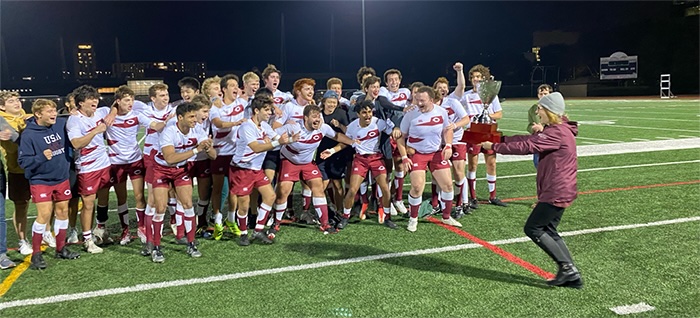
Hale grew up in Boston. Her parents met as civilians teaching on US military bases around the world. When they returned to the States, they left education and opened a travel agency.
Travel with her father’s tour groups became a central pillar of Hale’s schooling. The destinations were often geographically and culturally distant—Thailand, India, Japan. She went on safari in Kenya and saw tortoises mope about the Galapagos Islands. She hiked through the dense forests of Rwanda to glimpse gorillas; Jane Goodall and Dian Fossey were names Hale knew and held in her mind.
“Watching animals in the wild and being in places like that, with either working scientists or field guides who knew the science, was inspirational,” Hale says. She thought about becoming a veterinarian and worked in a vet’s office during high school, in addition to spending time with animals at the Museum of Science. But Hale had questions. She reconsidered careers. “Maybe research was something I could do.”
All of this brought her to Duke, and from there to the University of Chicago for her PhD in organismal biology and anatomy. She arrived with a project on the grasping mechanics of seahorse tails. “It was a bang-up project,” LaBarbera says. “Most students would have continued on that path for their PhD, but not Melina. She said she had another idea that she was really excited about.”
She wanted to investigate a high-performance, high-stakes behavior: the startle response in fish, famliar to anyone who’s peered into an aquarium—the magical, almost teleportive quickness with which fish avoid being eaten. For her dissertation, Hale researched the development and mechanics of the movement.
Wholly invested in this work, Hale was lovingly referred to as “the ghost” among the other three members of her cohort, because of how much time she spent in the lab. But her bottomless interest was not exclusively in fish behavior. Rather, it was representative. In the spring of her first year, she drove with another grad student, Jeffrey Wilson Mantilla, SM’99, PhD’99, who was studying dinosaurs, to Big Bend, Texas, where they served as UChicago paleontologist Paul Sereno’s field assistants.
“We wandered around looking for fossils,” Wilson Mantilla says, noting how disciplinarily dissimilar the hunt for bones in a southern desert is from watching fish flit away in surprise. “This was a sign of someone who is not just narrowly centered on one thing but interested in everything.”
Westneat was at the Field Museum then, and Hale, too, had an office there. On breaks they would descend to tour the preserved fish in the museum’s private collections, rows of gleaming jars tagged with a date and location, the breadth of biodiversity arrayed in front of them.
She and Westneat, who met while studying at Duke, married while Hale was in graduate school. At SUNY Stony Brook she did her postdoc with Fetcho, one of the foremost experts on the pair of neurons, known as Mauthner cells, responsible for startle behavior. The brain was a logical landing point for Hale. As she dove deeper into understanding the startle response, she moved up the chain of command, toward its origin, “to what’s controlling it and how it begins,” she says.
Larval zebrafish are three millimeters long and translucent, a distinctly useful trait that allowed Hale and her colleagues to study their brain activity in real time with the use of injected fluorescent markers that lit up as calcium flowed among firing neurons. Hale talks with awe about the small storms of neural activity that ensue when the fish are startled, about sitting in a lightless room and witnessing the magnified colors flicker like constellations, starry depths of the brain’s primordial workings.
Her scientific focus has wavered little over the decades. How do organisms sense their environments and then use this sensory information to produce behavior? What does a fin feel as it slips through the water, and what does a fish do with what it feels?
To a nonscientist, even a nonbiologist, there is something mildly baffling about how the career of one person, let alone many people, can be devoted to this infinitesimally narrow sliver of our universe. How does a lab overflowing with graduate students revolve almost entirely around the twitchy actions of a tiny fish?
“It’s hard for individuals who are not in the midst of basic research to understand the value,” says MBL neuroscientist Steve Zottoli, another expert on startled fish who has mentored and collaborated with Hale. Science often gets equated with the applied work of engineering; research is conflated with patents.
Big inventions do, of course, arise from basic research. Fetcho points to jellyfish proteins that are used in neural imaging and would not have been discovered had people not studied the basic biology. A quixotic inquiry into horseshoe crab blood in the 1970s yielded the limulus lysate test, now universally used to detect bacterial endotoxins. But these outcomes are not the point. The work, most simply, is a pilgrimage into mystery.
Reflecting on the somewhat enigmatic nature of basic research, Zottoli recalls a conversation he had years ago. “I told my grandmother about Mauthner cells, and she said, ‘That’s all very interesting, but I don’t know how you can make a living on two cells.’ I promised her that when the day came that I couldn’t make a living, I’d move on to something else.”
Zottoli is now retired, having never moved on to something else.
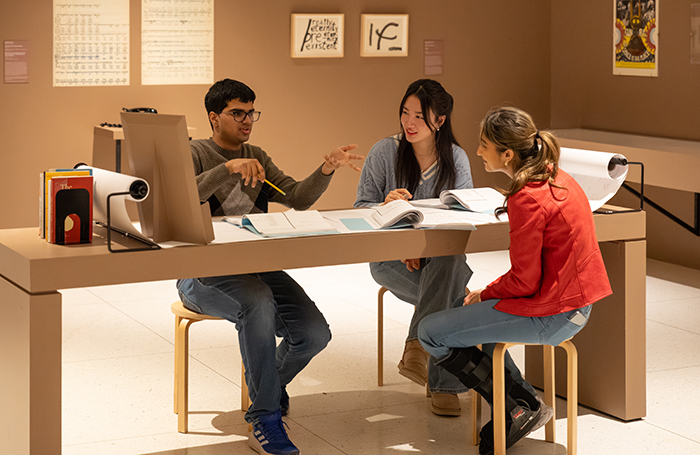
In time-honored UChicago fashion, Hale is forging ahead with her research while leading the College. It’s only natural for a dean who wants students to question, to challenge, to push knowledge forward. “She never saw the work of her lab in a vacuum,” says Hilary Bierman, PhD’07, one of Hale’s first graduate students. Even when Hale was a new assistant professor, Bierman watched her hitch her energies to the wider orbits of the University. Hale seemed to view her efforts as part of a larger whole, some more idealized end. “She never locked herself in her lab and considered that its own world.”
A few months before she became dean, Hale and two colleagues had what she considers one of the major breakthroughs of her career. For the last few years she has been studying octopuses—unusual creatures. They have a brain, of course, in their billowy ovoid heads. But their nervous systems are not centralized the way ours are. In each arm octopuses have a structure analogous to a spinal cord. And each arm also contains four very small nerve cords about which virtually nothing is known, not even, until recently, where they extend to. This was what Hale wanted to know. How do these nerves traverse the body and to what do they connect?
Together with researchers at MBL, Hale’s team has been delving deeper into the whys and hows of this complex nervous system and the way it controls octopuses’ movement. The work, which could potentially inform the design of autonomous undersea vessels or devices, received funding from the US Office of Naval Research. But apart from any particular applications, the question of why invertebrates like octopuses—and potentially squid and cuttlefish, which Hale’s lab is now investigating—have developed such anomalous nervous systems is a tantalizing one that could illuminate the design and engineering of life-forms more broadly.
Sitting in the dean’s office on the second floor of Harper Memorial Library, Hale begins outlining what she and her colleagues discovered when looking into the question. As she talks, she becomes increasingly animated, until she suddenly pauses in her description and reaches for an iPad and stylus. “Can I draw this? I need to draw this,” she says. Hale, it’s worth noting, is widely admired for her teaching. As a graduate student she was awarded the Wayne C. Booth Graduate Student Prize for Excellence in Teaching. More recently, she won the Faculty Award for Excellence in Graduate Teaching and Mentoring.
She slides her chair over and begins to sketch the recently revealed nerve structure. There are two of these mysterious nerves on each side of an octopus’s arm. The nerves on the right side of any given arm exit into the body, skip past the neighboring two arms, and connect to the third arm around the octopus. This pattern repeats. The nerves on the left side of an arm follow the same path in the other direction. Seen from above, in Hale’s nice analogy, it’s reminiscent of an image from a spirograph.
“The arrangement works out perfectly for a system that is connecting arms to one another. It’s amazing, this architecture,” Hale says. “We don’t know the function, but it has an incredibly beautiful geometry to it. No other animal does anything like this.” She sets down her stylus. She radiates a contagious exuberance. It is easy to see the value of this temperament in her new role: a burning curiosity, an overpowering desire to ask and answer questions, to seek greater understanding, and to bring others along in the search for knowledge. She wants to understand how it all works—a fish brain, an octopus arm, a university educating the next generation and the generation after that.
She looks at the picture of the octopus. It’s a crude illustration. The arms are too fat and short and they are uneven. But Hale sees beauty behind the imperfection. If a sacred silence can settle within the office of a university dean, in that moment it does.
Dylan Walsh, AB’05, is a freelance writer based in Chicago.
